|
|
|
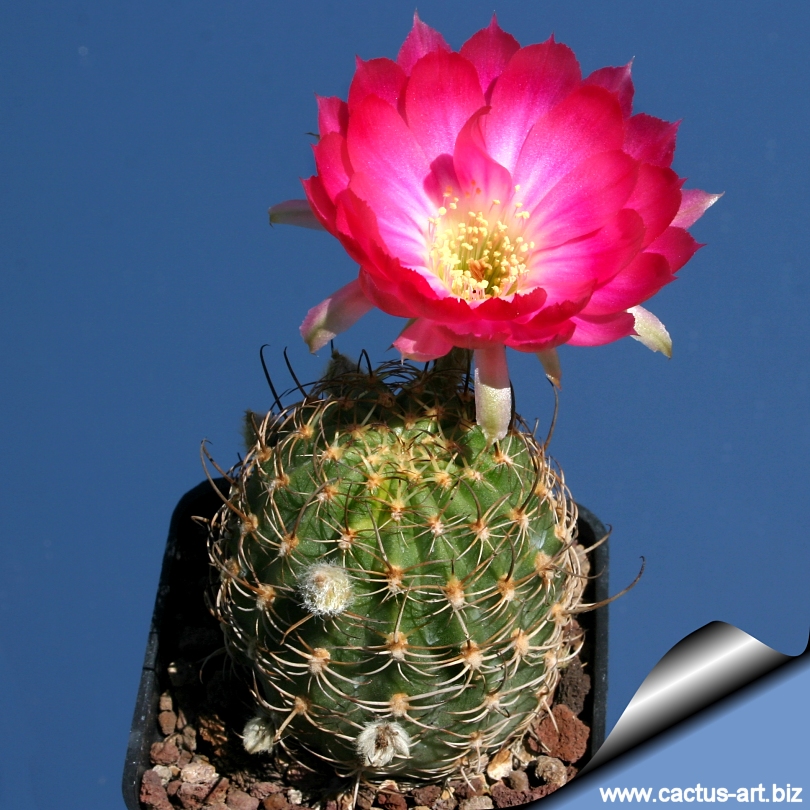
Lobivia winteriana
This species
is one of the most remarkable Lobivia, with large, very colourful
"shocking fuchsia pink" to purple-violet flowers with white centre.
Everyone should have this plant.
|
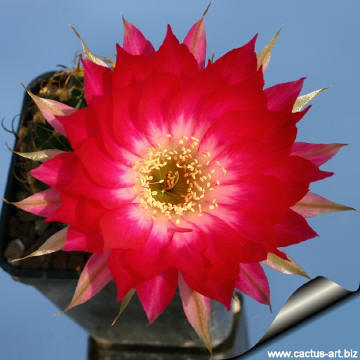 |
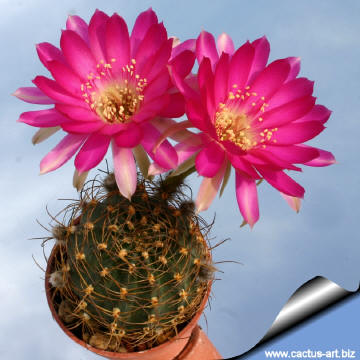 |
|
. |
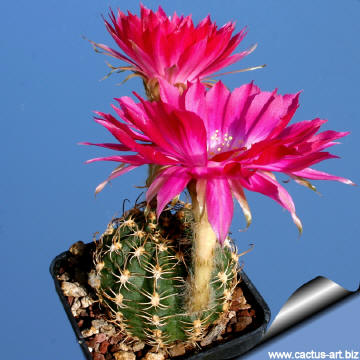 |
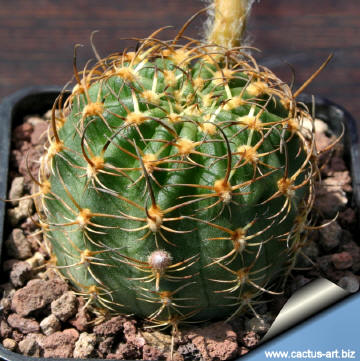 |
|
. |
 |
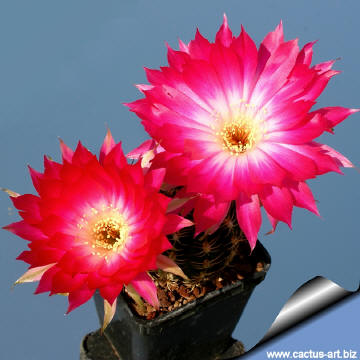 |
|
Photo of conspecific
taxa, varieties, forms an cultivars of Lobivia (Echinopsis)
backebergii. (This taxon has lots of
synonyms (like most Lobivia) whit several controversial varieties and
subspecies):
|
|


Advertising
|
|
|
|
|
Family:
Cactaceae (Cactus
Family) Lobivia winteriana
F. Ritter 1970
Currently accepted
Scientific name:
Echinopsis backebergii
Werderm. in Backeb.
In: Neue Kakteen 83, 84, fig. 1931 Fedde, Rep. Spec.
Nov. 30: 64. 1932
Origin: Peru, Huancavelica, Villa Azul altitudes about
3000 m.
Conservation status: Listed in
CITES appendix 2
Synonyms:
- Echinopsis winteriana Ritter
- Lobivia wrightiana var. winteriana
(Ritt.) Rausch
- Echinopsis backebergii
subsp. wrightiana (Backeb.) M.Lowry
In: Cactaceae Syst. Init. 20: 15. 2005
- Lobivia backebergii winteriana
- Echinopsis backebergia Werdermann
ex Backeberg 1931
- Lobivia backebergia (Werdermann
ex Backeberg) Backeberg 1935
- Lobivia wrightiana Backeberg 1937
- Echinopsis wrightiana (Backeberg)
G. D. Rowley 1982
- Neolobivia winteriana (F. Ritter)
F. Ritter 1981
|
|
Description: Lobivia
winteriana are small solitary or branched at base cacti, older plants
may form mats. They are very easy flowerers, if you keep them reasonably
cool and absolutely dry during winter.
Stem: At first globular becoming cylindrical as it ages, diameter
about 5-7 cm. Epidermis greys-green.
Ribs: 13-19 more or le spiralling
Root: Napiform (Carrot like)
Areoles: Oval with dull white felt.
Radial spines: 6-14 short, about 4-7 mm long, thin, unequal, curved
backward somehow pectinated, pale brown, yellow or amber when
young, later greys.
Central spines: None or sometime 1 stouter about 1 to 3 cm long,
darker with black tip.
Flowers: Large, funnel shaped, very colourful "shocking fuchsia
pink" to purple-violet with white centre 7, 5 to 9 cm in diameter.
Tepals lanceolate.
Fruit:: About 1,5 cm in long, tannish-green to brownish-red.
Seed: Black.
|
|
|
|
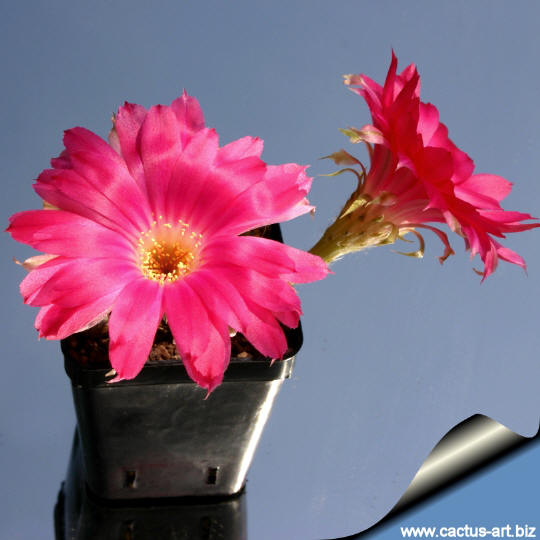
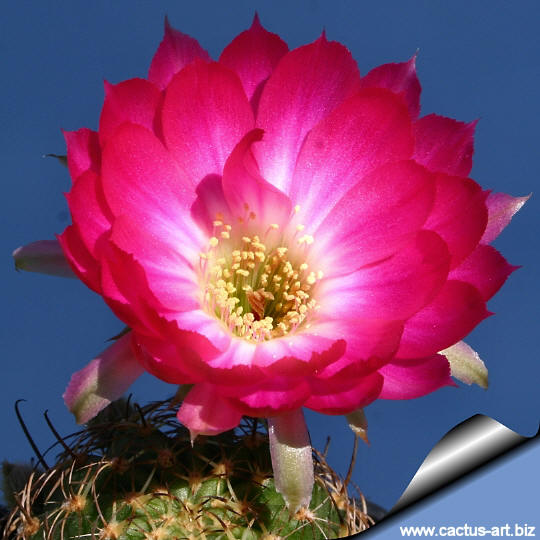
|
|
Cultivation: It is a summer
grower species that offers no cultivation
difficulties. Water regularly in summer (but do not overwater )
needs good drainage and very porous soil, keep rather dry in
winter.
Feed with a high potassium
fertilizer in summer.
It is quite frost resistant if kept dry (hardy to -5° C or less).
Need a bright exposure, full sun
or half shade in summer.
Propagation: Direct sow after
last frost, offsets.
|
|